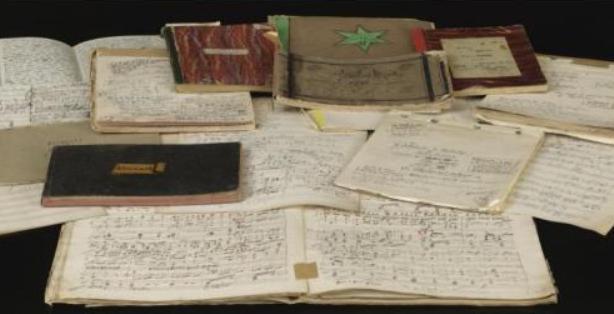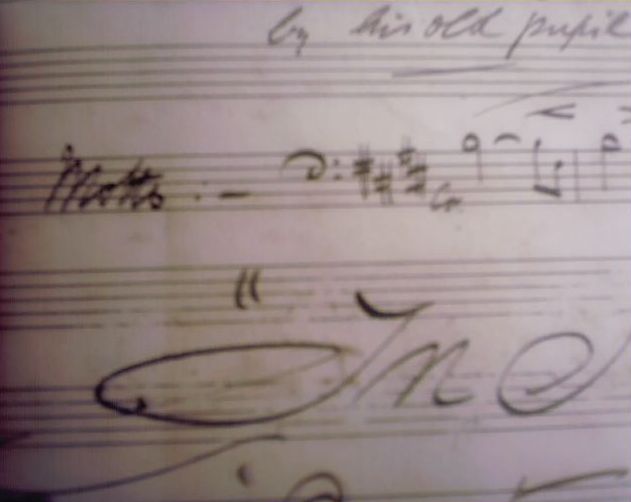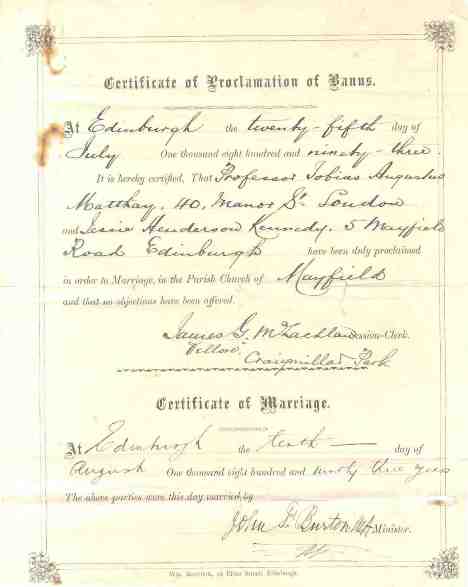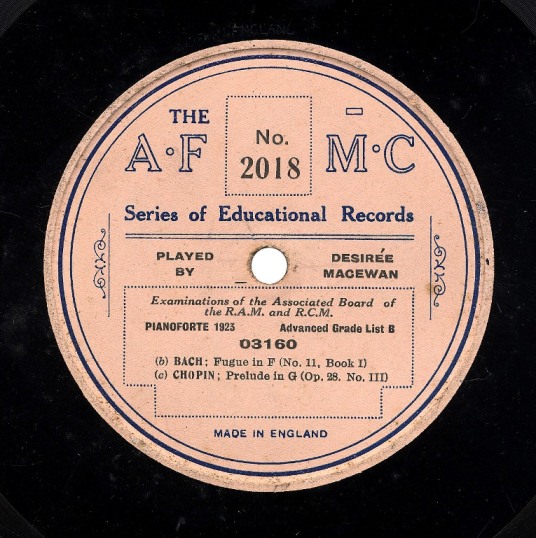| |
| |
| |
Some Rare Documents
 IN LONDON IN NOVEMBER OF 2006, Sotheby's auctioned over 7,000 pages of recently discovered Matthay manuscripts.
Fortunately, they were purchased by the Royal Academy of Music, which now houses the world's largest collection of Matthay scores
and unpublished writings. The earliest score dates from 1871.
IN LONDON IN NOVEMBER OF 2006, Sotheby's auctioned over 7,000 pages of recently discovered Matthay manuscripts.
Fortunately, they were purchased by the Royal Academy of Music, which now houses the world's largest collection of Matthay scores
and unpublished writings. The earliest score dates from 1871.
 ONE OF MATTHAY'S most significant orchestral works is In May (1882), an unpublished overture discussed in England's Piano Sage
on pp. 71-74. This is the autograph of
the title page with the opening horn-call motto partially visible, as well as the inscription: "Dedicated to Sir Arthur Sullivan
by his old pupil."
ONE OF MATTHAY'S most significant orchestral works is In May (1882), an unpublished overture discussed in England's Piano Sage
on pp. 71-74. This is the autograph of
the title page with the opening horn-call motto partially visible, as well as the inscription: "Dedicated to Sir Arthur Sullivan
by his old pupil."
 FROM ENGLAND'S PIANO SAGE, p. 140: "In August of 1893 Jessie and Tobias were married in Edinburgh. Their Banns were entered in Book 39 of the Clapham Parish Church on 2
July, 9 July, and 16 July respectively, and attested to on 21 July by the Reverend Noel P. Tower. Several days later on 25 July they also entered Banns at the Mayfield Parish Church in Edinburgh,
and the marriage was performed there on 10 August by the Reverend John S. Burton. "
FROM ENGLAND'S PIANO SAGE, p. 140: "In August of 1893 Jessie and Tobias were married in Edinburgh. Their Banns were entered in Book 39 of the Clapham Parish Church on 2
July, 9 July, and 16 July respectively, and attested to on 21 July by the Reverend Noel P. Tower. Several days later on 25 July they also entered Banns at the Mayfield Parish Church in Edinburgh,
and the marriage was performed there on 10 August by the Reverend John S. Burton. "
 AS DISCUSSED IN ENGLAND'S PIANO SAGE, pp. 239-40, Matthay released many of his writings and compositions through his
own publishing house, the Anglo-French Music Company, which he founded with John McEwen in 1916 to produce graduated educational music for the piano. His wife, Jessie, also observed that
Matthay viewed the AFMC as a useful and natural extension of his School:
"There was a rising generation of composers, both men and women, to be encouraged; and by bringing their work before the public, both by publication and performance,
something quite definite could be achieved." In the early 1920s, the AFMC also
issued a number of gramophone records to assist teachers and students with the preparation
of repertoire for Associated Board examinations. These discs are extremely rare today. Desirée MacEwan specialized in the teaching
of children at the Matthay School.
AS DISCUSSED IN ENGLAND'S PIANO SAGE, pp. 239-40, Matthay released many of his writings and compositions through his
own publishing house, the Anglo-French Music Company, which he founded with John McEwen in 1916 to produce graduated educational music for the piano. His wife, Jessie, also observed that
Matthay viewed the AFMC as a useful and natural extension of his School:
"There was a rising generation of composers, both men and women, to be encouraged; and by bringing their work before the public, both by publication and performance,
something quite definite could be achieved." In the early 1920s, the AFMC also
issued a number of gramophone records to assist teachers and students with the preparation
of repertoire for Associated Board examinations. These discs are extremely rare today. Desirée MacEwan specialized in the teaching
of children at the Matthay School.
 BEGINNING IN 1923, THE TOBIAS MATTHAY PIANOFORTE SCHOOL began a series of five concerts, generally in the
space of one week, which it termed its "Summer Festival." The fifth recital in the series was always
scheduled for Queen's Hall, and featured some of the School's finest talent. Many of the artists who performed
on the final concert of 1932 are discussed extensively in England's Piano Sage.
BEGINNING IN 1923, THE TOBIAS MATTHAY PIANOFORTE SCHOOL began a series of five concerts, generally in the
space of one week, which it termed its "Summer Festival." The fifth recital in the series was always
scheduled for Queen's Hall, and featured some of the School's finest talent. Many of the artists who performed
on the final concert of 1932 are discussed extensively in England's Piano Sage.
|
| |
|
|
|